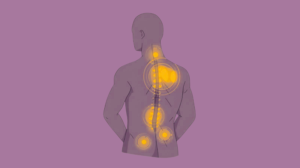Wrist pain is more common than most people realize. From long hours of typing to lifting heavy weights at the gym, our wrists bear a surprising amount of strain every single day. Conditions like carpal tunnel syndrome, arthritis, sprains, and repetitive strain injuries (RSI) are on the rise, especially with more people working on laptops and smartphones for hours at a stretch.
That’s where wrist support braces come in. Designed to stabilize, compress, and protect the wrist joint, these simple devices have become essential for office workers, athletes, gamers, and patients recovering from injuries. But the question remains, do they really work, and what’s the right way to use them?
What Is a Wrist Support Brace?
A wrist support brace is a wearable device made from fabric, Velcro straps, and sometimes rigid splints that are worn around the wrist to provide stability and support. Unlike simple wrist wraps, braces are designed to limit excessive motion, reduce strain on ligaments and tendons, and keep the wrist in a neutral position.
Common types include:
- Rigid wrist braces: With built-in splints, often used for carpal tunnel syndrome or post-surgical recovery.
- Flexible wraps or compression braces: Provide gentle support during sports and typing.
- Thumb-spica braces: Extend support to the thumb, used for conditions like De Quervain’s tenosynovitis.
When Should You Use a Wrist Brace?
Wrist braces are not just for athletes, they are helpful across a wide range of conditions. Here are the main scenarios where protocols recommend their use:
Carpal Tunnel Syndrome
One of the most common conditions, caused by pressure on the median nerve inside the wrist. Braces keep the wrist in a neutral (straight) position, reducing nerve compression, especially during sleep.
Wrist Sprains and Strains
After a fall, sports injury, or overuse, the ligaments in the wrist can be overstretched or torn. Braces provide external stability, limiting painful movements while tissues heal.
Post-Surgical Recovery
After surgeries like carpal tunnel release, tendon repair, or fracture fixation, doctors often recommend wearing a wrist brace to protect healing tissues and prevent re-injury.
Sports and Gym Training
Athletes in sports like tennis, badminton, gymnastics, and weightlifting often wear wrist supports to reduce strain during repetitive or high-stress movements.
Everyday Ergonomic Support (Typing, Writing, Driving)
For office workers, gamers, and drivers who spend hours using their wrists in fixed positions, wrist braces offer ergonomic support, helping reduce fatigue and RSI risk.
Benefits of Wrist Support Braces
When used correctly, wrist support braces provide multiple benefits:
1. Pain Relief
Braces immobilize or partially restrict movement in the wrist, reducing stress on injured tissues and easing pain from arthritis, tendonitis, or nerve compression.
2. Joint Stabilization
By keeping the wrist in proper alignment, braces prevent awkward angles that worsen strain or injuries.
3. Reduced Swelling and Inflammation
Gentle compression helps control edema (fluid buildup) after injuries or long hours of repetitive work.
4. Protection During Recovery
Post-injury or post-surgery, braces act as a shield, protecting healing ligaments and bones from further stress.
5. Improved Hand Function in Daily Tasks
Many people find that braces allow them to carry out daily tasks like typing, cooking, lifting objects with more confidence and less discomfort.
Usage Protocols for Wrist Support Braces
Unlike general advice, protocols provide structured, step-by-step guidance on when, how, and how long to wear wrist braces.
1. Choosing the Right Brace
- For carpal tunnel syndrome: Rigid brace with splint to keep wrist straight.
- For sports/gym: Flexible wrap or compression brace to allow mobility.
- For post-surgery: Doctor-prescribed rigid immobilizer.
- For typing or daily work: Lightweight, ergonomic wrist brace.
2. How to Wear Correctly
- Ensure the brace is snug but not overly tight (you should be able to slip a finger under it).
- The splint (if present) should align with the underside of the wrist.
- Avoid bending the wrist inside the brace, it should maintain a neutral alignment.
3. How Long to Wear (Day vs Night Use)
- Carpal tunnel syndrome: Often recommended during sleep when unconscious wrist bending occurs.
- Sports: Wear only during activity, not continuously.
- Post-surgery: Follow the surgeon’s timeline, usually 2–6 weeks.
- Office workers: Use during prolonged typing sessions, then remove during breaks.
4. Cleaning and Maintenance
- Wash braces weekly with mild soap and air-dry.
- Avoid machine drying, which can damage elastic fibers.
- Replace worn-out braces (usually every 6–12 months).
5. When to Stop Using
- Once pain subsides and normal strength/mobility is restored, gradually reduce usage.
- Transition to wrist exercises and strengthening instead of relying solely on a brace.
Risks and Limitations of Wrist Support Braces
While braces are highly beneficial, overuse or incorrect use comes with drawbacks:
1. Over-Reliance Weakening Wrist Muscles
Wearing a brace too often can cause the muscles around the wrist and forearm to become dependent and weaker.
2. Limited Help for Severe Injuries
Braces cannot heal torn ligaments, fractures, or advanced arthritis. In such cases, surgery or physiotherapy may be necessary.
3. Skin Irritation from Long Use
Prolonged use without breaks can cause rashes, itching, or sweat accumulation.
4. False Sense of Security
Some athletes may push themselves too hard, thinking the brace protects fully, leading to further injury.
Who Should Use Wrist Braces?
- Office Workers: To prevent or manage repetitive strain injuries.
- Athletes: Especially in tennis, badminton, gymnastics, CrossFit, and weightlifting.
- Arthritis Patients: To relieve joint stiffness and pain.
- Post-Surgery Patients: For protection during recovery.
- Gamers & Drivers: To reduce fatigue from long repetitive use.
Final Thoughts
Wrist support braces work best when used correctly and for the right conditions. They are not miracle cures but can provide significant relief from pain, improve stability, and speed up recovery when combined with exercise, ergonomic adjustments, and medical care.
Think of them as temporary support systems, useful for managing pain and recovery, but not a replacement for strengthening and rehabilitation.
Frequently Asked Questions:
1. Can I wear a wrist brace while sleeping?
Yes, especially for carpal tunnel syndrome, as nighttime wrist bending worsens symptoms.
2. Do wrist braces cure carpal tunnel syndrome?
No, but they relieve symptoms and prevent worsening. Long-term treatment may include physiotherapy or surgery.
3. Can I use a brace while lifting weights?
Yes, flexible braces or wraps are commonly used in gyms, but they should not replace proper form and wrist strengthening.
4. Should I wear it on both wrists for typing?
If you experience discomfort in both wrists, yes. Otherwise, use only on the affected side.
5. How long should I wear a wrist brace daily?
It depends on the condition:
- Carpal tunnel: nights or prolonged typing.
- Sports: only during activity.
- Injury recovery: as advised by a doctor, usually 2–6 weeks.
References:
- Howell, D. M., Bechmann, S., & Underwood, P. J., “Wrist Splint,” StatPearls, updated August 8, 2023. Explains that wrist splints (rigid braces) are commonly used post-injury or surgery to provide proper healing alignment, pain reduction, and immobilization. Splints reduce edema and discomfort, particularly in conditions like carpal tunnel syndrome and osteoarthritis, where night use can alleviate symptoms. It also cautions about prolonged use potentially leading to joint stiffness.https://www.ncbi.nlm.nih.gov/books/NBK557630
- National Institute for Health and Care Excellence (NICE), “Carpal tunnel syndrome: Learn More – Wrist splints and hand …”, updated ~8 months ago. Note that night splinting holds the wrist in a neutral position, improving symptoms within a few weeks. The effect may be temporary, and daytime movement is essential to prevent stiffness or muscle weakening. https://www.ncbi.nlm.nih.gov/books/NBK279596
- “Efficacy of splinting the wrist and metacarpophalangeal joints for the …” BMJ Open. Finds that a wrist splint incorporating MCP joints is more effective than standard wrist-only splints, offering long-lasting improvements. https://www.medicaljournals.se/jrm/content/html/10.2340/16501977-1804
- Pruitt, J., “The 4 Best Carpal Tunnel Braces for Easing Wrist Pain, According to Orthopedists & Wrist Surgeons,” Health.com, January 13, 2022. Quotes orthopedic experts recommending night bracing for optimal relief, and urges consulting a doctor if symptoms persist beyond three weeks or worsen. https://www.health.com/mind-body/best-carpal-tunnel-braces























